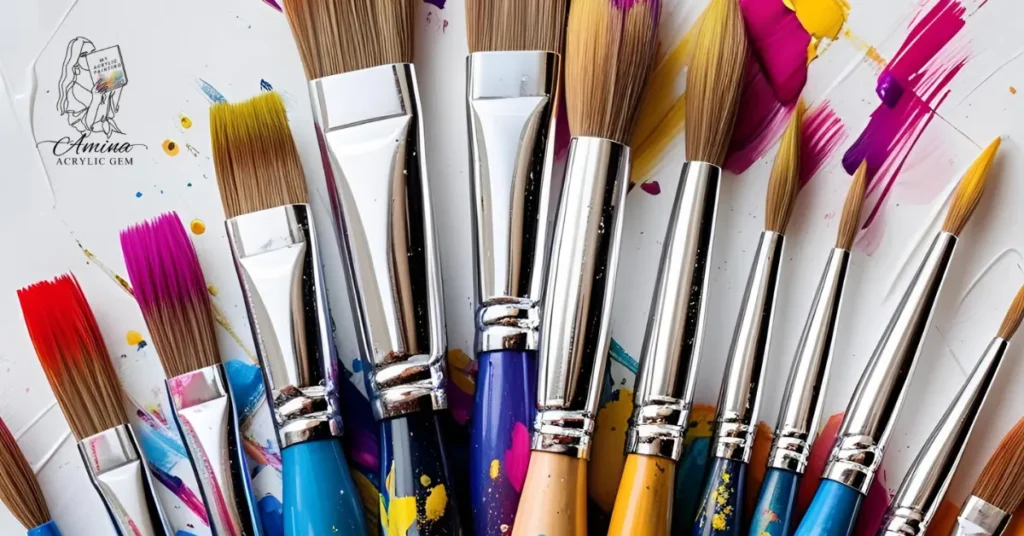Acrylic Painting Tools Every Beginner Should Own
If you’ve ever stared at a blank canvas wondering where to start, you’re not alone. As a beginner, diving into the colorful world of acrylics can feel like walking into an art store with a blindfold on. You know you need acrylic painting tools, but which ones? What about a beginner acrylic painting kit? Is there a secret acrylic painting supplies list somewhere that seasoned artists are hiding?
Well, fear not. We’re here to demystify the process and walk you through all the must-have acrylic tools and essential tools for acrylics you’ll need to get started. No fluff, no confusing jargon—just a friendly guide to help you paint your first masterpiece without crying into your paint water (we’ve all been there).
The MVPs of Acrylic Painting Tools
Before we get into the fancy stuff, let’s talk about the real heroes—the basic acrylic painting supplies list tools that are absolutely essential.
a. Brushes
You don’t need a million brushes. A few good ones will do:
- Flat Brushes: Great for bold strokes and backgrounds.
- Round Brushes: Perfect for details and curved lines.
- Filbert Brushes: A hybrid of flat and round—versatile and beginner-friendly.
Go for synthetic bristles. Acrylic paint is tough on natural hair.

b. Palette and Palette Knives
A simple plastic or wooden palette is fine. You’ll also want a palette knife to mix paints and create texture. It’s like cooking, but you’re less likely to set anything on fire.
c. Paints
Start with primary colors (red, blue, yellow), black, and white. That gives you the power to mix almost anything. Choose student-grade paints at first—your wallet will thank you.
d. Canvas or Acrylic Paper
Canvas boards or acrylic paper pads are great for beginners. They’re affordable, don’t warp easily, and give you that satisfying surface to paint on.
e. Water Cup & Rag
Sounds basic, but you’ll clean your brushes a lot. Keep a cup of water (not your coffee mug!) and an old cloth nearby.
Build Your Beginner Acrylic Painting Kit
Okay, so now that you’ve got the essentials in mind, let’s talk about building your actual beginner acrylic painting kit. Here’s a basic checklist:
- A set of synthetic brushes (flat, round, filbert)
- Acrylic paints (at least 6 basic colors)
- Mixing palette
- Palette knife
- Canvas or paper
- Cup and rag
- Optional: spray bottle to keep paints moist
Put it all in a shoebox or a fancy art tote if you’re feeling bougie. The goal is to have your kit ready to go when inspiration hits—like when your cat knocks over your tea and suddenly you want to paint something chaotic.
Must-Have Acrylic Tools for Creative Freedom
Beyond the basics, there are some tools that will give you extra creative control and make your painting process smoother (and more fun).
a. Gesso
This is a primer you put on surfaces to make them paint-ready. If your canvas feels like sandpaper, it probably needs gesso. It makes the paint stick better and helps your brushes glide.
b. Masking Tape
Great for clean edges and cool geometric patterns. Plus, peeling it off is weirdly satisfying.
c. Easel
Not totally necessary, but it’s better for your posture. And it makes you look more like a Real Artist.
d. Spray Bottle
Keeps acrylics from drying too fast. A couple of spritzes and you’ve got more time to blend.
Painting Surfaces: What to Paint On
You’ve got your acrylic painting tools, but what are you going to paint on?
- Canvas Boards: Great for practice.
- Stretched Canvas: More professional, but pricier.
- Acrylic Paper: Affordable and easy to store.
- Wood Panels: Adds a rustic charm.
Try a few and see what you like. You might discover your masterpiece belongs on a cereal box lid—art is weird like that.
Clean-Up and Maintenance
Here’s a fun fact: dried acrylic paint is basically plastic. So clean your brushes right after painting, or they’ll become very expensive toothpicks.
- Wash with water and mild soap.
- Don’t let brushes soak overnight.
- Reshape the bristles after cleaning.
If your brush does harden, soak it in Murphy’s Oil Soap for a few hours. Yes, that’s a thing. Welcome to the secret world of brush-saving sorcery.
Organizing Your Acrylic Painting Supplies List
Let’s make life easier. Keep your tools sorted:
- Brush holder: A mug works if you’re low-budget.
- Tackle box or drawer organizers: For paints and mediums.
- Label everything: Especially if you’re sharing space or kids are involved.
You’ll thank yourself later when you can find your palette knife and not your potato peeler.
Bonus Tips for Beginners
- Don’t overthink your first painting. Just start. Blob some paint, move it around. Boom—you’re painting.
- Mix more paint than you think you need. Matching the same shade later is like finding a needle in a rainbow.
- Try painting with music. It helps with rhythm and mood.
- Take breaks. Your canvas isn’t going anywhere. Unless it’s windy and you’re painting outside. Then yeah, chase it.
Final Thoughts: Your Journey Starts Now
You don’t need a hundred tools or an expensive studio to create something amazing. With just a handful of essential tools for acrylics, some enthusiasm, and a willingness to make happy little mistakes (thanks Bob Ross), you’ll be surprised how far you can go.
The best part? Acrylics are forgiving. You mess up, you let it dry, and paint right over it. Art and life—both allow do-overs.
Let’s Hear from You!
Have a favorite brush or a go-to trick that helped you get started? Drop it in the comments—we’re all learning together.
And if you found this guide helpful (or at least mildly entertaining), share it with a fellow beginner who’s still using their fingers to paint like it’s kindergarten. No judgment. We’ve all been there.
Happy painting!


